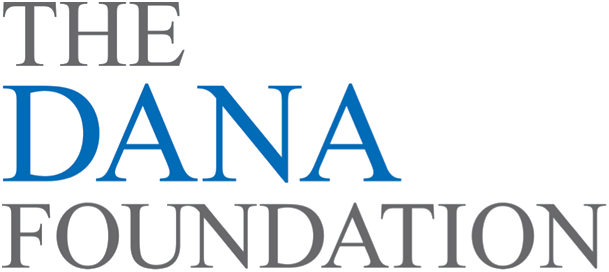Challenges and Opportunities in Drug Addiction Research
- Published1 Dec 2010
- Reviewed1 Dec 2010
- Source The Dana Foundation
Nora Volkow, M.D., National Institute on Drug Abuse on new information that may help fight addictive behaviors.
Neuroscience is at a historic turning point. Today, a full decade after the “Decade of the Brain,” a continuous stream of advances is shattering long-held notions about how the human brain works and what happens when it doesn’t. These advances are also reshaping the landscapes of other fields, from psychology to economics, education and the law.
Until the Decade of the Brain, scientists believed that, once development was over, the adult brain underwent very few changes. This perception contributed to polarizing perspectives on whether genetics or environment determines a person’s temperament and personality, aptitudes, and vulnerability to mental disorders. But during the past two decades, neuroscientists have steadily built the case that the human brain, even when fully mature, is far more plastic—changing and malleable—than we originally thought. It turns out that the brain (at all ages) is highly responsive to environmental stimuli and that connections between neurons are dynamic and can rapidly change within minutes of stimulation.
Neuroplasticity is modulated in part by genetic factors and in part by dynamic, epigenetic changes that influence the expression of genes without changing the DNA sequence. Epigenetic processes are of particular clinical interest because their external triggers (such as early parental care, diet, drug abuse and stress) can affect a person’s vulnerability to many diseases, including psychiatric disorders. In addition, in contrast to genetic sequence differences, epigenetic alterations are potentially reversible, and thus amenable to public health policy interventions.
It also has become increasingly clear that the human brain is particularly sensitive to social stimuli, which likely has accelerated the rate of human brain evolution. Humans have evolved a complex neuronal circuitry in large areas in the brain to process complex social information (such as predicting others’ reactions and emotions) and to respond appropriately. New research has revealed that social stimuli (such as parenting style and early-life stress) can epigenetically modify the expression of genes that influence brain morphology and function including the sensitivity of an individual to stressful stimuli. In the future, this knowledge will enable us to tailor personalized prevention interventions that are based on information on how genetics and epigenetics affect brain function and behavior. For example, a recent study showed that a prevention intervention based on improving parenting style reduced the risk for substance use disorders only in adolescents with a particular variant of a gene that recycles the chemical serotonin back into the neurons, which is a variant that results in greater sensitivity to social adversity.
In the coming decade, insights about what underlies neuroplasticity, combined with technological advances that allow us to “see” with greater precision the human brain in action, are bound to revolutionize the way we view learning and the methods we use to educate young people. New research will also show us how to help people overcome or compensate for many of the deficits associated with drug abuse, addiction and other mental disorders.
For example, scientists are using imaging technologies in neurofeedback programs that train people to voluntarily recalibrate their neural activity in specific areas of the brain, allowing them to gain unprecedented control over, for example, pain perception or emotional processing. During drug addiction treatment, this approach could greatly reduce the risk of relapse by enabling a patient to control the powerful cravings triggered by a host of cues (e.g., people, things, places) that have become tightly linked, in the brain of the user, to the drug experience.
Other promising advances stem from ongoing research and development of direct communication pathways between a brain and external computer devices, the so called brain-computer interfaces (BCI). In a recent study, one version of BCI appeared to help paralyzed stroke victims regain some movement control. In the next decade, forms of BCI might help people with a variety of neuropsychiatric conditions that have proved resistant to traditional treatments. For example, early evidence suggests that BCI training could benefit patients with epilepsy or attention-deficit/hyperactivity disorder (ADHD) that is unresponsive to drugs.
As we build on these rapid advances in neuroscience research, we must keep a watchful eye on their vast social and political implications. For example, neurologists have started to uncover the molecular components and neural circuitry that underlie the learning process. We also are learning how to use transcranial magnetic stimulation (TMS), a noninvasive method to modulate the activity within a neural circuit, more effectively. Should we use this knowledge to better educate young people and teach new skills to seniors, or should we use these tools only to treat people with neuropsychiatric disorders? As we begin to understand how parenting styles affect the development and function of the brain, how far should we go to protect children from the long-term and deleterious effects of bad parenting?
Recent progress in brain research and associated fields has been impressive, and we are sure to witness further acceleration in the pace of neuroscientific discovery in the next couple of decades. Indeed, we are entering a new era in which our technologies are beginning to affect our lives in profound ways. We are bound to recast our relationship with our brains and, in the process, to redraw the boundaries of human evolution.CONTENT PROVIDED BY
The Dana Foundation is a private philanthropic organization that supports brain research through grants and educates the public about the successes and potential of brain research.
Also In Archives
Trending
Popular articles on BrainFacts.org


















